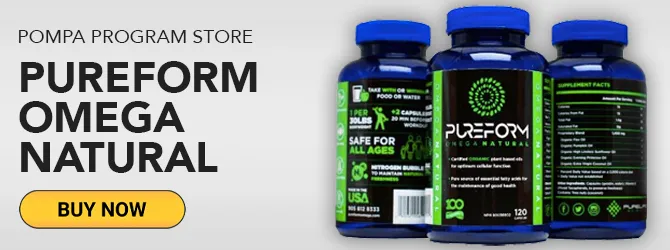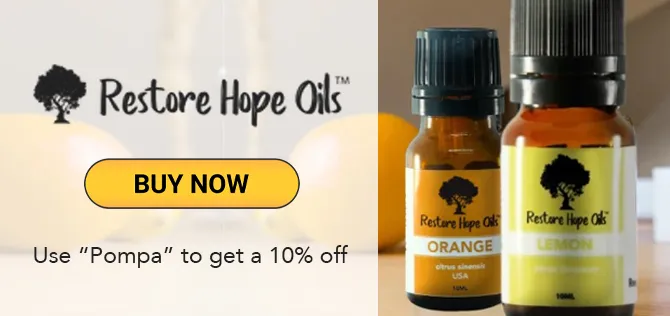Trauma can come in many forms: chemical, physical, and emotional. The long term repercussions of the trauma in any of these three categories can be debilitating, if not processed and healed correctly at the time. Today we explore the connection between addiction, trauma, and cellular detox.


Detoxing From Addiction and Trauma: What Is An Addiction?
The word addiction can be rather triggering for people, not wanting to inflate or overstate their situation. Of course, there are ‘typical' addictions and patterns that we recognize universally, but the more nuanced or less obvious addictions can be just as harmful. For this article and in the name of healing, we see addiction as any substance, habit, or general scenario that is repeated and leads to a negative outcome. This outcome can come from a broad category of things, including food, relationships, medications (pharmaceutical and natural), alcohol, technology, sex, and shopping. The statistics about genuinely breaking addiction patterns are staggeringly low, somewhere between 3 and 5 percent. We believe strongly that this is because only the addiction itself is being examined, and not the underlying trauma.The Link Between Addiction and Trauma
An addiction can become the solution to trauma for a few reasons, a major one being addiction as a coping mechanism. The limbic part of the human brain reacts to the fight of flight that is triggered during a trauma. If this stress reaction is isolated to a predator, like it was ancestrally, this dump of stress hormones was useful to run away. In modern times, these emotional traumas loop in our heads. The body will try to self-soothe by whatever means possible. Various addictions trigger reward and pleasure centers in the brain. Whether it be the thrill of gambling, the pleasure response of delicious food or sex, or the disassociation that comes from drugs and alcohol– these various sensations numb the pain that stems from trauma. As our body adapts to the baseline, these addictions generally become more significant and more pronounced with time. When addiction is dealt with on a superficial level, it is common that quitting one addiction leads to the rise of a new one. If someone stops drinking alcohol, the person might pick up smoking. If someone quits a smoking addiction, they may pick up a food addiction. When you don't adequately address the underlying trauma, one numbing habit is simply replaced with another.A Multi-Therapeutic Approach to Detoxing From Addiction and Trauma
When we think of the word ‘detox,' it's often chemical detox that comes to mind. We think of the cellular detox with physical tools like zeolites, fasting, and herbs. Although this is a crucial part, and we will touch on it below, it is not the full story. Addressing detox from a multi-therapeutic approach ensures that you heal not only the physical body but also the emotional body. Until we address the emotional side of trauma, there is no severing the habitual manifestation that it has as our various addictions. Dealing with the trauma is what breaks an individual free from the need to self-soothe through these multiple addictions.Cellular Detox
We genuinely believe that the body wants to heal itself when obstacles are removed. Unfortunately, due to the modern lifestyle and degrees of toxicity– that natural desire our body has to heal itself requires a little assistance. Toxins are essentially substances that are harmful to our living bodies. Technically anything can become toxic given the wrong dosage. More complications occur when we factor in the short term vs. long term implications of the exposure to toxins. Toxins hurt your body in various ways. They begin by placing a burden on the excretory system that is responsible for ridding these toxins from your body. Your excretory system is comprised of your lungs, digestive tract, skin, kidneys, and liver. Cellular detox comprises of a few steps:- Remove toxic foods from your diet, and replace them with cleansing, whole, nourishing, and organic foods
- Remove toxins from your home, and replace them with non-toxic alternatives (this includes personal care products, cleaning products, and even the materials that make up your furniture, cookware, etc.)
- Implement a cellular detoxifying protocol best suited to your individual needs
Mindset
Our model for healing the physical body also translates to the mind and these beings with mindset. When it comes to recovery, this includes removing an individual's attachment to the addiction. Without shifting the mindset, there will be a continual hormonal looping when it comes to the pleasure response achieved through the addiction. Our mind plays a crucial role in triggering the hormones in our body, and by repeating the same patterns over and over, we can become addicted not only to the activity itself but also to the hormonal response it provides. Whether that be physical-chemical responses like an addiction to adrenaline and cortisol or a mental-emotional response like guilt or shame, we start to program our baseline to need these sensations to feel normal, and by addressing mindset, it can begin to shift us out of these patterns.The key here is the why.
Connecting with the why helps reinforce a new habit, by knowing deeply and continually reminding ourselves of the intention. Finding a positive, genuine connection to the reason behind the need for a change can help reprogram our neurons to fire in a new way. It's essential to do this from a place of self-love and compassion. We don't want to reinforce any feelings of shame or guilt along the journey towards healing. In practice, this may look like tackling food addictions by shifting the mindset from “I need to lose weight. I need to eat less and exercise more because I hate the way I look in the mirror” can instead become: “I want to honor my body in this life. I want to support it by nourishing it with real food and experiencing the gift that I have to move and sweat”. By taking the mindset out of a negative, self-hate loop and into a positive, self-loving mindset, we can start to heal the physical and emotional body. It can be helpful to include something that is greater than you in your why. This something can be finding health and wellness for your children's sake, or your spouse, your friends. It can be finding mental clarity so you can live out your life's purpose, or to be an example to your community.Childhood Trauma: Connection
We have a deep-rooted ancestral need for connection. The way that we were raised plays a huge role in shaping the way we see the world. Most of these neural patternings are fully formed before the age of seven. The human attachment and connection we receive as children shape how safe we feel in the world. Attachment patterns can even be passed down intergenerationally. When babies and children don't get enough physical touch and a general sensation of feeling safe and supported– this becomes a common source of addiction as adults. We self-soothe with drugs, alcohol, gambling, or food as a way to fill the void.Thankfully, there is a wide range of modalities that can help break those patterns and introduce new neural pathways to heal the trauma.
This neural path is called neuroplasticity; it is the brain's ability to change the physical structure and functioning of itself in response to your life experiences, repeated behaviors, emotions, and thoughts. Working with a coach can be useful to help reinforce the mindset, actionable habits, implement forgiveness practice for those who have hurt or unintentionally shaped you in this way, and apply techniques like EMDR to help reprogram the brain. Neuroplasticity is like exercise for the brain. Knowing that when you lift weights, your body adapts and gets stronger is paralleled by the ability to think your way to a new pathway, which manifests itself as a new way of operating in the world.Reframing: Pain to Purpose
When we explore our childhood and the traumas that we have been exposed to either directly or transgenerationally, it is useful to reframe them as gifts we have been given in this life to fuel our purpose. Pain is a universal experience, and by taking something that hurts you and overcoming it, this often becomes a driving force for your life's purpose. Whether it be physical abuse, a debilitating autoimmune condition, or even just the trauma of witnessing parents divorce at a young age: you can take the lessons you learned through this trauma and help others overcome and navigate their experience. Turning your pain into purpose can look like so many different things. As a practitioner, Dr. Pompa helps guide his patients back to health using the same techniques and strategies he developed healing himself and his family. For you, it may look like using art or music as therapy. It may look like becoming a preschool teacher and showing unconditional love to your students, or it may even look like working as a cashier and showing genuine interest and undivided attention to each customer. The things that you lacked or were traumatized by as a younger person can become the jet fuel to help you be your best self: leading by example.Detoxing From Addiction and Trauma: Heart Math
During stress and negative emotions, when the heart rhythm pattern is erratic and disordered, the corresponding pattern of neural signals traveling from the heart to the brain inhibits higher cognitive functions. This pattern limits our ability to think, remember, learn, reason, and make effective decisions. HeartMath technology offers a new approach to improving emotional wellbeing. The technology enables a change in your heart rhythm pattern to create physiological coherence. Heart signals have a significant effect on brain function – influencing emotional processing as well as higher cognitive faculties such as attention, perception, memory, and problem-solving. In other words, not only does the heart respond to the brain, but the brain continuously responds to the heart. The device itself is so simple and is comprised of a small tool that provides biofeedback for your heart rate, and makes recommendations on types of breathwork that will help stabilize your heart rhythm patterns. With live feedback, you can see your heart rate pattern develop a more coherent rhythm in real-time.IV Therapy
IV therapy is an instrumental bridge to help support the body during times when absorption may be low, or during times the body is experiencing higher degrees of stress than usual. Through IV therapy, the body is getting 100% absorption directly into the circulatory system. Bypassing the stomach helps provide direct support to the body. Vitamin IV's are common, but the latest innovations in IV therapy have widened the scope of injections to some pretty incredible substances. Some of our favorites include:- NAD: has been shown to promote maintained mental clarity, focus, protect mental clarity, and protect against neurodegenerative diseases for a healthier and happier quality of life
- Phosphatidylcholine: is being used to treat a wide range of ailments, including high cholesterol, liver disease, chest pain, fat embolism, and fatty plaque deposits in arteries.
- Glutathione: is a potent detoxifying agent that supports many systems of the body and provides incredible support for the liver. The liver metabolizes out toxins, so giving it that added support is crucial when it comes to health.
Detoxing From Addiction and Trauma: Nutrition
Food is the building block of your physical body, but it also has a profound impact on our emotional body. Cultivating a healthy relationship with food requires a mindset of self-love, rooted in a desire to nourish your body and promote good health, both physical and mental.When it comes to nutrition, there is no linear way that works for every single individual.
A few key concepts that work for the majority of the population include:- Pasture-raised animal protein and fats (beef, chicken, lamb, and goat)
- Wild seafood (particularly small fish like sardines, mackerel, and anchovies)
- A wide range of organic vegetables, in season and preferably grown local
- Low consumption of processed-foods (flours, oils, and sugars)
- Proper preparation of food, including soaking, sprouting, and fermenting harder to digest ingredients
- Eating within a restricted time window (intermittent fasting)
- Using diet variation to promote metabolic flexibility (keto days, higher carb days, and water fasting days)
- Sticking to spring water or filtered water as the primary source of hydration
- Mindful consumption of caffeine
- Avoiding alcohol











